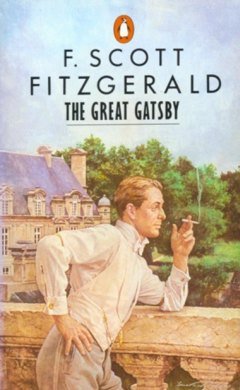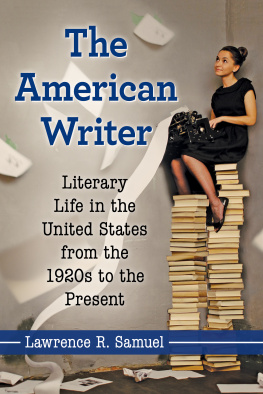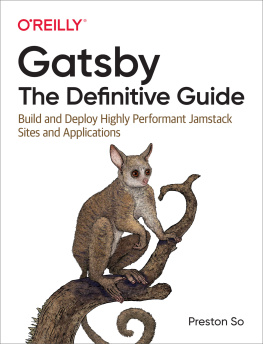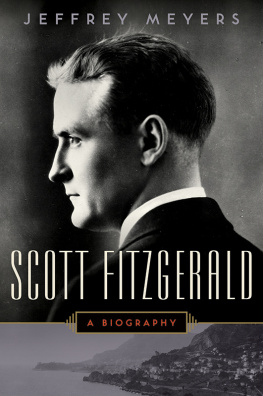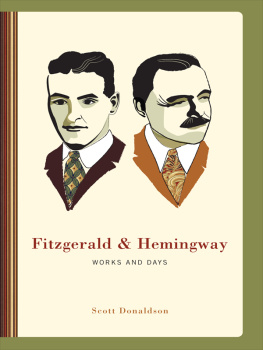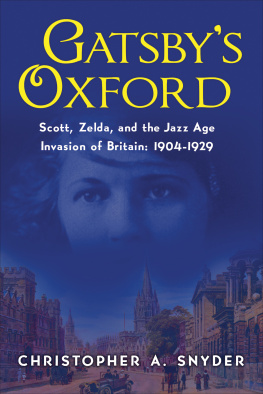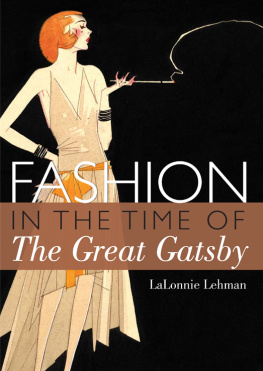Penguin Critical Studies
The Great Gatsby
Kathleen Parkinson read English at London University. She has since taught in secondary schools and further and higher education institutions, and is currently Principal Lecturer in English at the Roehampton Institute of Higher Education. She has also written a critical study of Tender is the Night for Penguin Books.
Penguin Critical Studies
Advisory Editor: Bryan Loughrey
F. Scott Fitzgerald
The Great Gatsby
Kathleen Parkinson

Penguin Books
PENGUIN BOOKS
Published by the Penguin Group
Penguin Books Ltd, 80 Strand, London WC2R 0RL, England
Penguin Putnam Inc., 375 Hudson Street, New York, New York 10014, USA
Penguin Books Australia Ltd, 250 Camberwell Road, Camberwell, Victoria 3124, Australia
Penguin Books Canada Ltd, 10 Alcorn Avenue, Toronto, Ontario, Canada M4V 3B2
Penguin Books India (P) Ltd, 11 Community Centre, Panchsheel Park, New Delhi 110 017, India
Penguin Books (NZ) Ltd, Cnr Rosedale and Airborne Roads, Albany, Auckland, New Zealand
Penguin Books (South Africa) (Pty) Ltd, 24 Sturdee Avenue, Rosebank 2196, South Africa
Penguin Books Ltd, Registered Offices: 80 Strand, London WC2R 0RL, England
www.penguin.com
First published in Penguin Masterstudies 1987
Reprinted in Penguin Critical Studies 1988
Copyright Kathleen Parkinson, 1987
All rights reserved
Except in the United States of America, this book is sold subject to the condition that it shall not, by way of trade or otherwise, be lent, re-sold, hired out, or otherwise circulated without the publisher's prior consent in any form of binding or cover other than that in which it is published and without a similar condition including this condition being imposed on the subsequent purchaser
ISBN: 978-0-14-193220-0
Contents
Note
Page references in this study are to a 1984 Penguin reprint of the text. Earlier texts have a page extent of 192, while 1984 and later texts have an extent of 172. The Twentieth-Century Classics edition uses the same page numbering as 1984 and subsequent editions but also includes a critical introduction.
1. The Great Gatsby: A Novel of the 1920s
After achieving success and recognition with the publication of his first novel, This Side of Paradise, in 1920, Scott Fitzgerald chose both to identify his writing career with the ebullience and optimism of the decade, and also to be its keen critic. The hedonistic mood of the 1920s came to an end with the Wall Street crash of 1929, which was followed by a period of economic suffering and misery for millions of Americans in the biggest consumer society in the world. Fitzgerald identified his own declining creativity with this deterioration. In the early 1920s, however, for a young man not too long demobbed from the army, who was to be dependent on his writing for a living and knew what it meant to be hard-up, literary acclaim brought the satisfaction of knowing that he could write. A further happy result was that Zelda Sayre, whom he had met while he was an officer in the army, agreed to marry him now that his future seemed assured. Even so, for a young couple given to extravagant living the sales did not bring in enough money, and he quickly found that he could command high prices for his short stories. A recent biographer expresses the dilemma which, as a serious novelist, Fitzgerald faced through the 1920s.
As a writer Fitzgerald had to live by the pendulum because as soon as he stopped grinding out pulp for the big magazines and turned to serious writing he found himself on the brink of financial disaster. His independence was measured by the number of stories he had to produce each year. But his dependence increased with his needs, which grew grander by the year; the temptation to take the easy way was reinforced by the rapidly rising fees he commanded, especially from the [Saturday Evening] Post.
It is significant that a good story like A Diamond as Big as the Ritz (see the Penguin collection of stories published under that name) was refused by this magazine because it was critical of American materialism. Only optimistic stories were wanted for popular consumption. As a writer sensitive to the times Fitzgerald wanted to be a serious critic of the society in which he lived, and yet he longed for commercial success too. Already in 1922, when he was twenty-five years old, there is evidence in his diary of inner tension.
A bad year. No work. Slow deteriorating depression with outbreak around the corner.
The Jazz Age: It was borrowed time anyhow
Fitzgerald was regarded, however, by readers of the Post as the writer who best represented images of the new post-war generation of ambitious middle-class Americans wanting to enjoy the consumer spending boom of the 1920s. His stories seemed to express the dream world which advertising was busily constructing: jazz and dancing; young flappers who cut their hair, smoked and drank new women; romantic night-life. Above all, his characters were consumers who spent lavishly and extravagantly. As its most successful contributor of stories, Fitzgerald helped to create the rapid success of the magazine.
In their early married life the Fitzgeralds seemed to embody the new Jazz Age, and Fitzgerald wrote both himself and his wife into some of his short stories as well as into his next novel, The Beautiful and Damned (1922). But both drank heavily and they were often in debt, despite the income from the film rights of several stories. Moreover, there seems to have been a mutually destructive drive in their relationship, as each egged the other on to extremes of rashness and irresponsibility; yet each needed the other. The Fitzgeralds' own lifestyle provided a wealth of material for the novel he was working on. In 1922 they returned to New York from the Midwest, where they had gone for the birth of their only child and where he could work in peace. They rented a house in Great Neck, Long Island, across the bay from where the old-established millionaire families of the first industrial boom in the late nineteenth century had their summer homes. There is a measure of correspondence here to Fitzgerald's fictional locations of West Egg where Nick Carraway lives, and East Egg where the Buchanans' estate is, but Fitzgerald superimposed his own geography on a real locale. A number of great estates existed along the shores of the island, many being taken over in the 1920s by theatre and film personalities, newspapermen, songwriters and musicians, along with a few rich bootleggers. One such figure was the financier Edward Fuller, who achieved notoriety at the time Fitzgerald was planning Gatsby's financial activities. The Fitzgeralds themselves entertained on a large scale, their parties sometimes going on for several days. Le Vot constructs what he regards as a typical scenario for the social life they led at this time, though he does not provide any sources, and one must read it as a biographer's dramatic fiction with some basis perhaps in personal memoirs.
Fitzgerald, with a bottle of champagne clamped under his arm, escorting screenwriter Anita Loos [Gentlemen Prefer Blondes] into the Plaza in search of Zelda and a friend, only to be chucked out for being too drunk; sharing the warm champagne with the three women in the taxi taking them to Great Neck, interrupting
Doc Civet or Miss Baedeker, guests at Gatsby's second party (pp. 1023), would have felt at home.
Lavish consumption and hedonistic display were acceptable activities in the 1920s. Advertising on a new national scale encouraged Americans to buy, and to get rich quickly was not merely an aspiration but a possibility, even a requirement. Corruption was widespread. Members of the administration were implicated in scandals involving fraud and bribery; other scandals had for some years involved city politicians and police in corruption relating to the control over prostitution and gambling empires. One figure who reigned in the underworld until his murder in 1928 was Arnold Rothstein, whose life bears some resemblance to the fictional figure of Meyer Wolfshiem in
Next page

